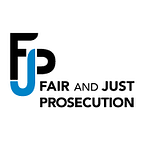FJP On the Road: Why Germany?
Over the summer, Fair and Just Prosecution and over 20 prosecutor leaders from across the US traveled through Germany and Portugal to explore international models and innovative strategies to reduce incarceration, prevent crime, and strengthen communities. For more on the trip, check out our other dispatches from Germany and Portugal.
In the 1960s, incarceration rates across Europe were roughly comparable to those in the United States. In the decades since, America’s incarceration rate has skyrocketed and become an international outlier. While we comprise only 5% of the global population, the United States today has nearly 25% of the world’s prison population.
Where did we go wrong? And how can the US bring its justice system back into line with international norms?
Over the next two weeks, FJP and leading DAs from across the US will be in Germany and Portugal to develop answers to these questions — and to craft practical solutions and new approaches that can be imbedded in our own communities. We know that innovative and proven strategies exist elsewhere and should not hesitate to reach beyond our borders for smart ideas that can advance an equitable, compassionate and right-sized justice system.
Incarceration as the exception…
Germany incarcerates people at an astounding one-ninth of the US rate. In lieu of prison sentences, the vast majority of sanctions imposed by the German criminal justice system are fines or, in the juvenile system, education or disciplinary measures. And unlike in the US, where unpaid costly fines often result in imprisonment and a revolving door through the justice system, Germany uses “day fines” which are calibrated to account for the individual’s financial status and equalize the impact of the fine across different economic strata. If individuals are unable to pay the full fine immediately, they can pay it in installments or perform community service instead.
Even among those who are “sentenced to prison,” most receive a “suspended” sentence, which is similar to being placed on probation, rather than actually being sent to prison. Only about five percent of adult sentences actually result in immediate incarceration — and those sentences are significantly shorter than the average American counterpart. This bears repeating: in Germany only about five percent of adult sentences actually result in someone behind bars; indeed, Germans are at a loss to understand our decades-long ramp up of more and longer prison sentences.
“Even among those who are “sentenced to prison,” most receive a “suspended” sentence, which is similar to being placed on probation, rather than actually being sent to prison. Only about five percent of adult sentences are for actual “unsuspended” imprisonment.”
Over the coming week we’ll be speaking with service providers, specialized police officers, judges, prosecutors and social workers who make these outcomes possible — and we’re excited to bring that learning home.
A different model for confinement
This coming week, we’ll also be visiting both an open and closed prison in Berlin. While German prisons aren’t perfect, they offer a different paradigm for thinking about the practice of incarceration. Underlying German correctional systems is the notion of human dignity, as well as the mandate that life in prison must be as similar as possible to life outside of prison.
In practice, this means people incarcerated in Germany generally have the right to a private cell and are “allowed individual expression and a fair amount of control over their daily lives,” such as wearing their own clothes, cooking their own food, and furnishing their living space.
In open prisons, people are free to leave for work, school or to visit their families during the day so that reentry is smooth. Psychologists assess each person when they arrive at the prison and make an individualized plan that may include counseling, vocational training and work. Correctional officers receive two years of training, with an emphasis on social work skills, and don’t carry weapons. Violence is exceedingly rare.
To American eyes, German prisons are places where it’s possible to envision rehabilitation actually occurring. But the most important reforms in Germany aren’t the ones inside of prisons — instead, as noted above, they’re the ones that keep people out of prisons.
Coming to terms with their past
Germany transformed many parts of its justice system in the wake of Nazism and the Holocaust, just as Germany has gone to great lengths to come to terms with its troubling past. The United States has its own record of human rights violations to reckon with, including colonialism, slavery, Jim Crow laws, segregation and decades of racially-biased policing and criminal justice decision-making — all of which have left communities desolated. Germany offers a helpful starting place to explore the vital question of how we acknowledge our history and transform our justice system in response.
A new generation of elected prosecutors, including all of those accompanying us this week, are already beginning to grapple with those questions and blaze a new path forward. We hope that this trip will provide this inspiring group of leaders with new insights to continue to reimagine and realize a more fair, compassionate and equitable justice system.
